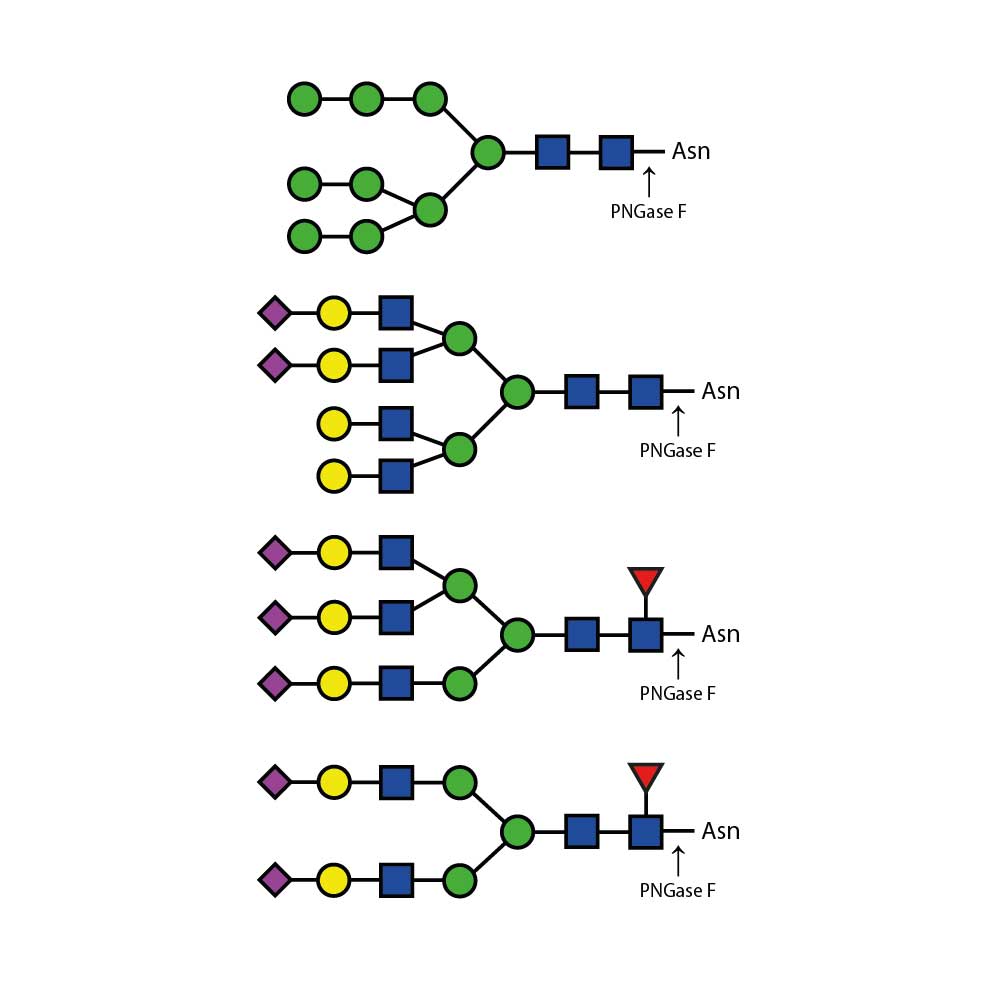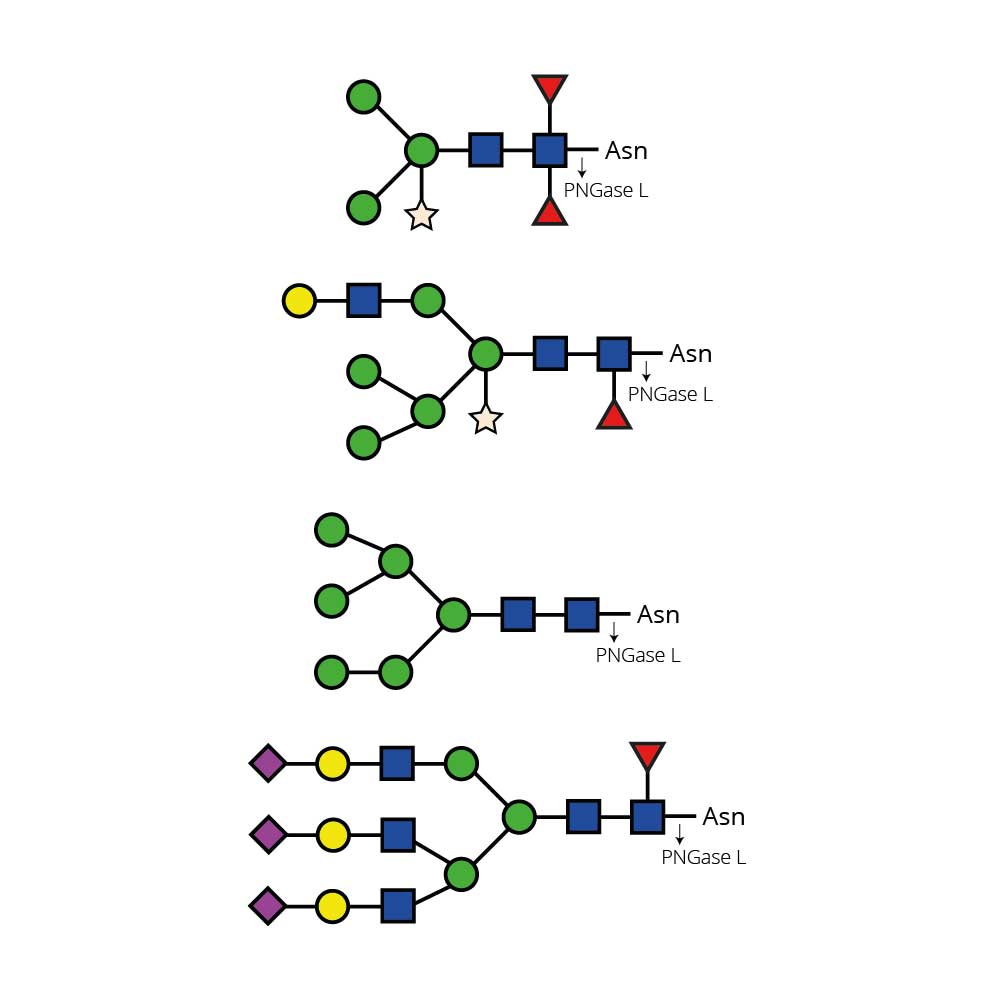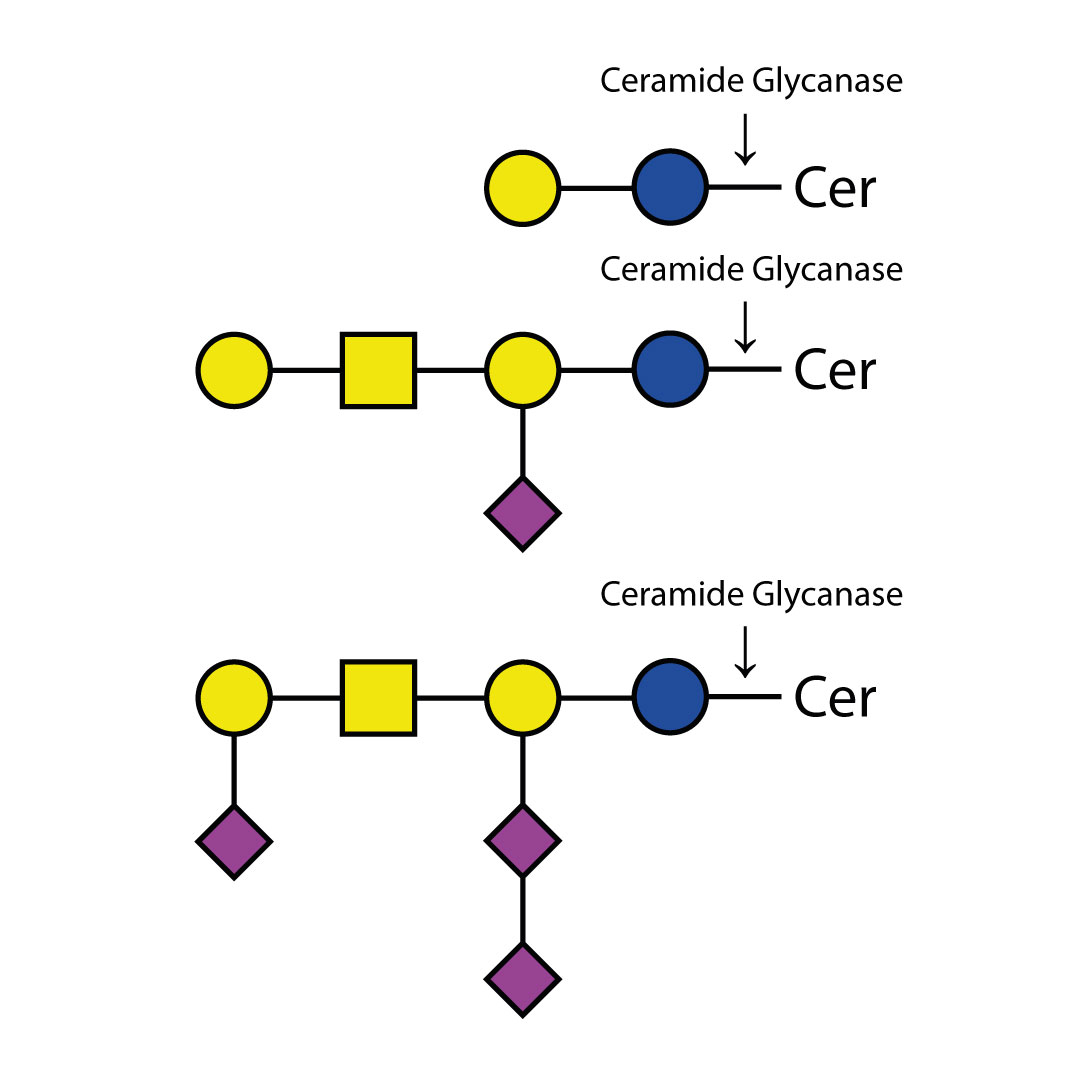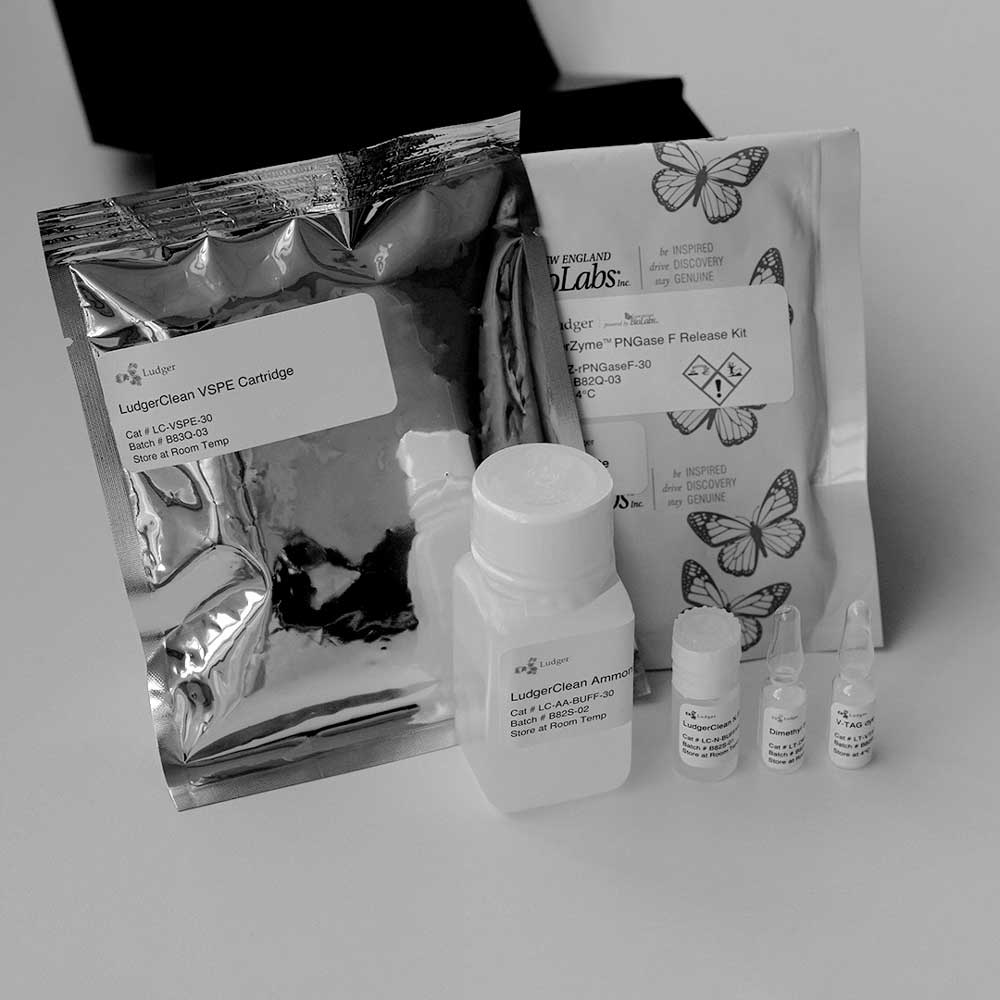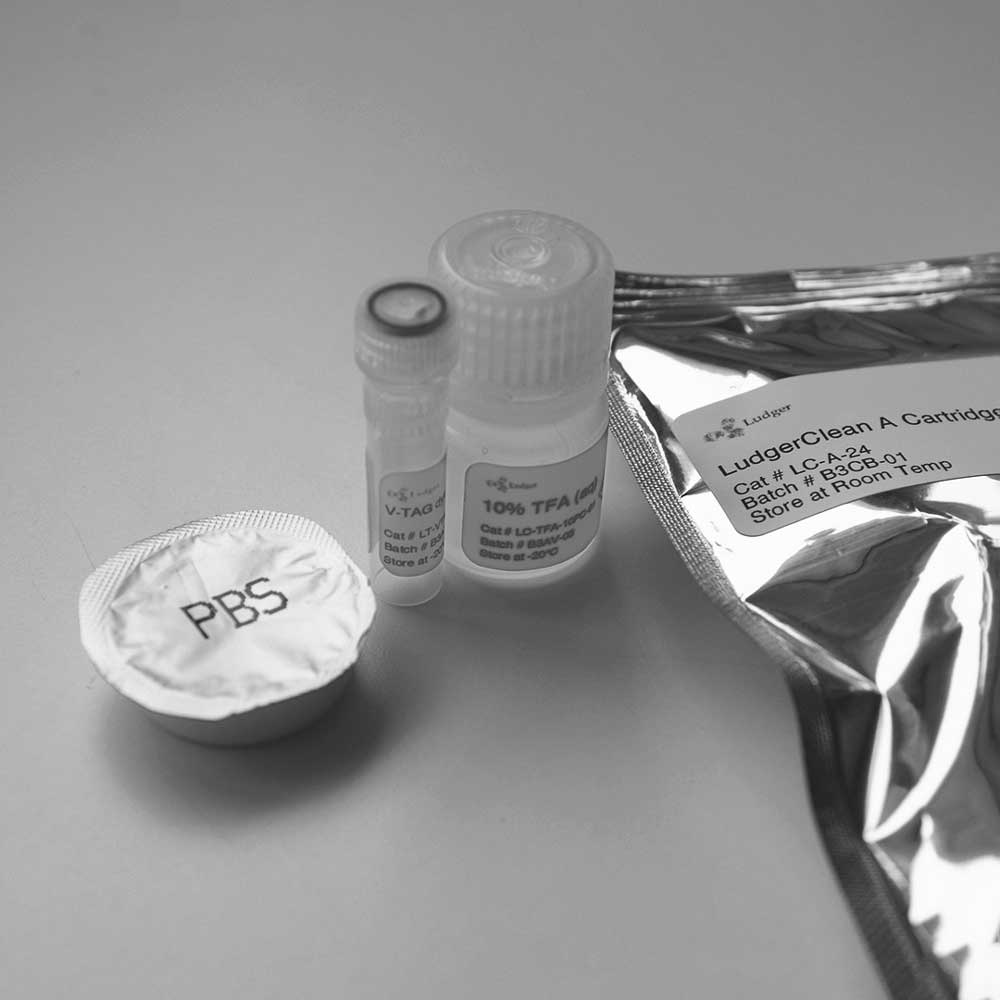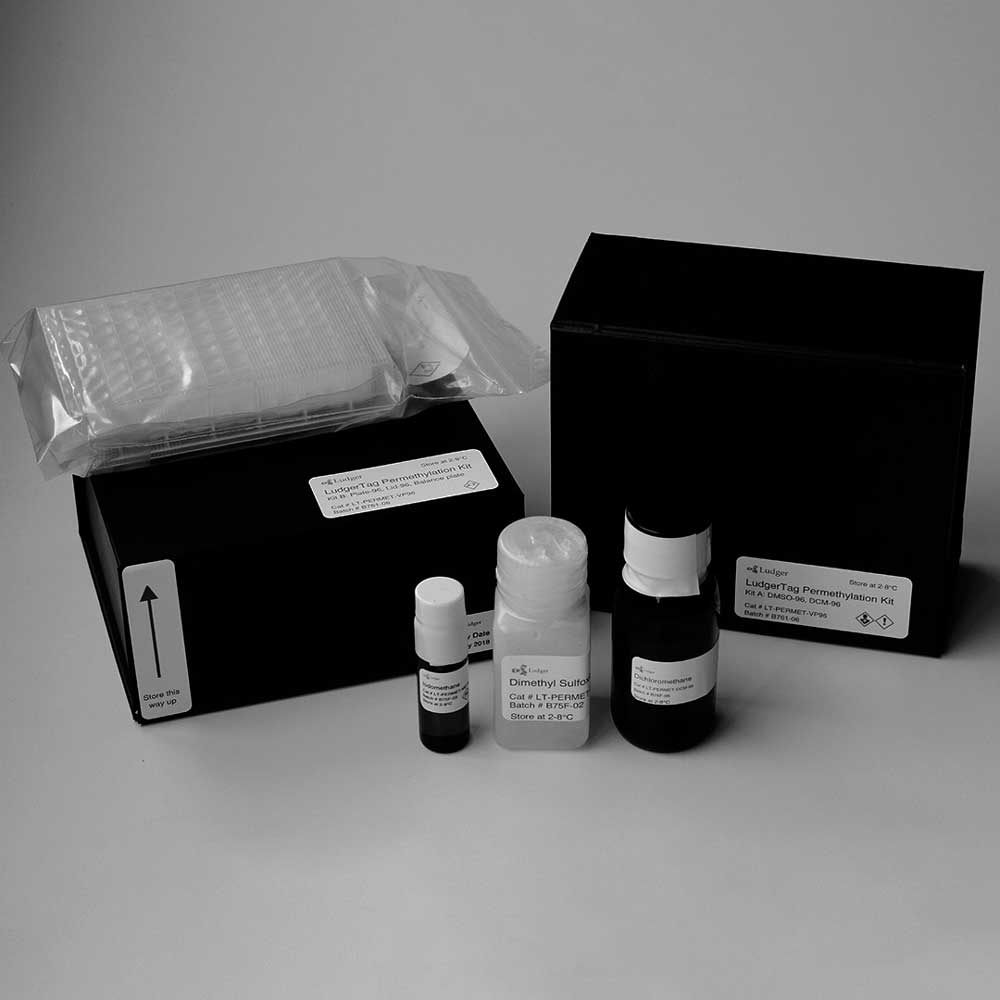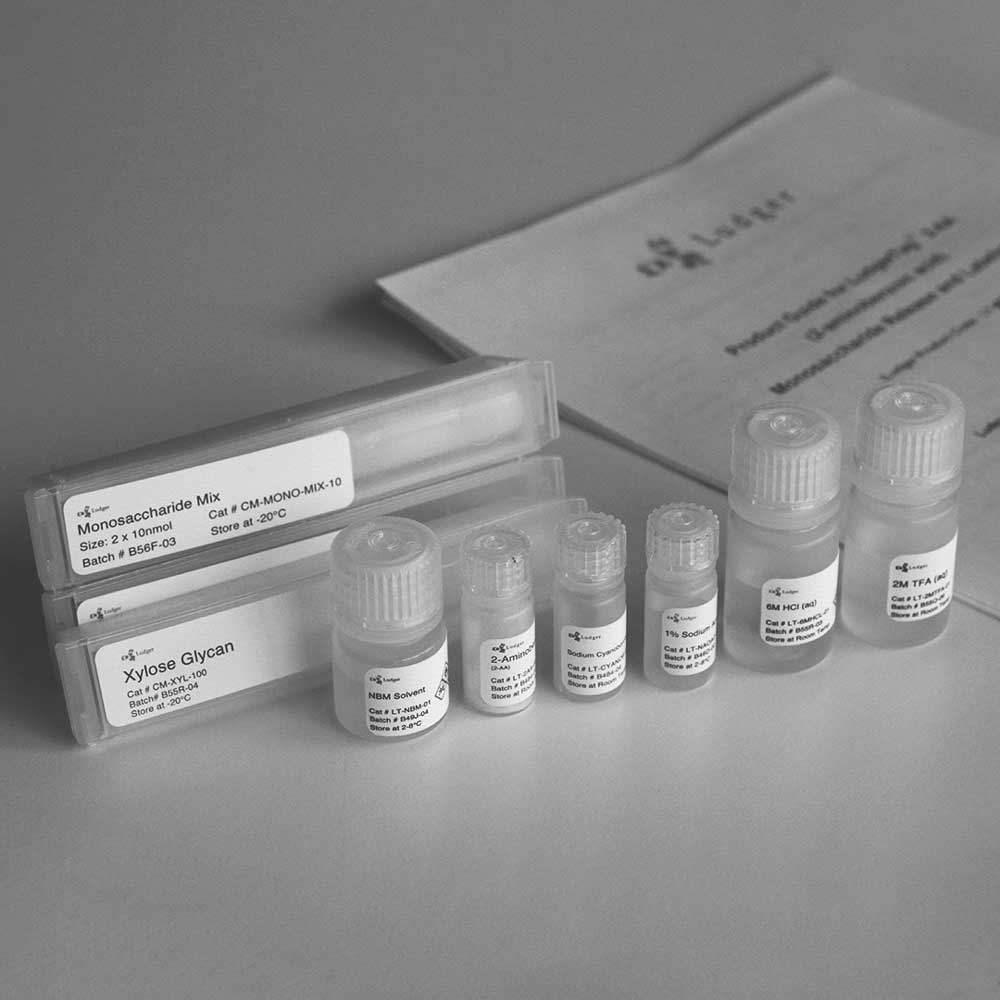
.gif)

-
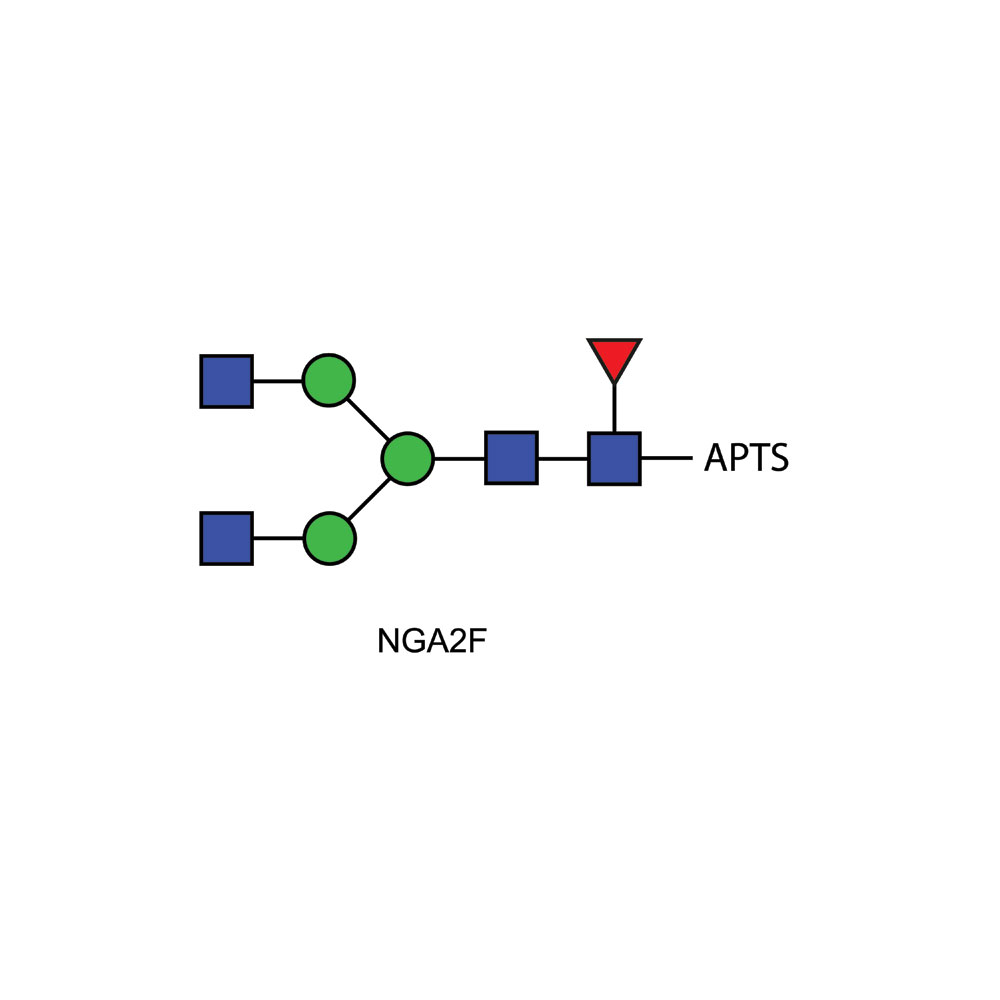

-
NGA2F多糖标准品(FA2, G0F), APTS标记,货号: CAPTS-NGA2F-01 参考价RMB 857元(具体询价)
https://www.ludger.com/product-catalogue/nga2f-glycan(fa2,g0f)-apts-labelled/APTS labelled core-fucosylated, asialo, agalacto biantennary oligosaccharide
Biantennary N-glycan that contains terminal N-acetylglucosamine residues, and fucosylation on the core GlcNAc, 20pmol.
m/z: 1903.5091-
0.000.00
-
APTS labelled core-fucosylated, asialo, agalacto biantennary oligosaccharide
Biantennary N-glycan that contains terminal N-acetylglucosamine residues, and fucosylation on the core GlcNAc, 20pmol.
m/z: 1903.5091
NGA2F glycan (FA2, G0F), APTS labelled
NGA2F APTS Glycan Synonyms: NGA2F N-linked oligosaccharide, F(6)A2, G0F
Description: G0F: Asialo-, agalacto-, core-fucosylated bi-antennary complex-type N-glycan (oligosaccharide). NGA2F is the agalacto- substructure of NA2F (G2F) glycan.
Sources: The G0F glycan is found on many mammalian glycoproteins including human IgG and is a substructure of bi-antennary N-linked oligosaccharides such as A2F, A1F, and NA2F which are widely found on glycoproteins. This product is typically purified from the oligosaccharide pool released from porcine thyroglobulin by hydrazinolysis using a combination of HPLC and glycosidase digestion.
Form: Dry. Dried by centrifugal evaporation from an aqueous solution.
Molecular Weight: 1905
Fluorescence: λex = 425 nm, λem = 503 nm.
Amount: 20 pmols
Purity: >80% pure as assessed by HPLC.
Storage: -20˚C both before and after dissolution. This product is stable for at least 5 years as supplied.
Shipping: The NGA2F APTS glycan can be shipped at ambient when dry. After dissolution, ship on dry ice.
Handling: Allow the unopened vial to reach ambient temperature and tap unopened on a solid surface to ensure that most of the lyophilized material is at the bottom of the vial. Gently remove the cap, add the desired volume of reconstitution medium, re-cap and mix thoroughly to bring all the oligosaccharide into solution. For maximal recovery of oligosaccharide, ensure that the cap lining is also rinsed and centrifuge the reconstituted vial briefly before use. Ensure that any glass, plasticware or solvents used are free of glycosidases and environmental carbohydrates. Minimise exposure to elevated temperatures or extremes of pH. High temperatures and low pH will cause desialylation. High pH will cause epimerisation of the reducing terminus GlcNAc.
Safety: This product is non-hazardous and has been purified from natural sources certified to be free of all hazardous material including pathogenic biological agents.
电话:186 0210 8329
157 1167 5909
cindy.li@ludger.com
QQ:258363672 170439096

Ludger

QQ(Lily): 258363 672 QQ(Cindy): 170 439 096
地 址:上海静安区南京西路1266号



